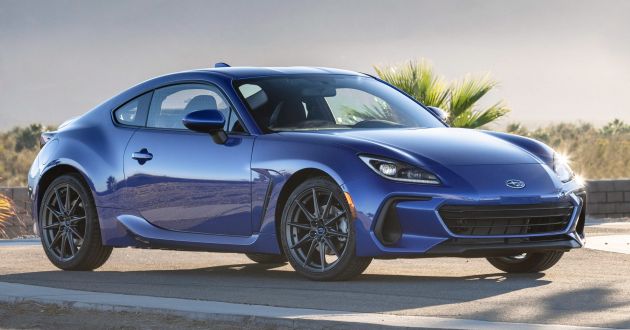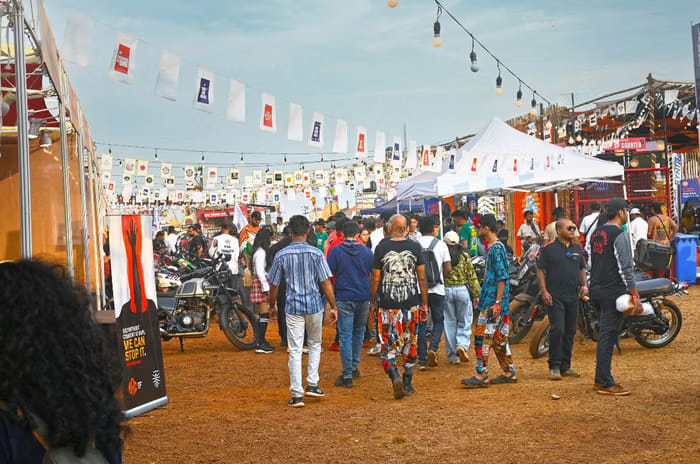2022 Subaru BRZ debuts – redesigned second-gen sports car gets a 2.4L boxer engine; 228 hp, 249 Nm
This is it, the second-generation Subaru BRZ. Just like the original that made its debut at the 2011 Tokyo Motor Show, the new sports car is the result of Subaru’s partnership with Toyota, with both companies previously agreeing on an expanded capital alliance last September.
The first-generation model was well received upon arrival, as it had all the things that enthusiasts looked for: engine at the front, drive to the rear wheels, and the option of a manual transmission, all wrapped up in a coupe body.
This recipe remains unchanged with the new car, but the ingredients have been modified or improved to ensure drivers are treated to “more thrills, more rear-wheel drive fun, more of everything serious drivers love about the BRZ,” as the company puts it.
Let’s start with the most important question that has been on everyone’s mind prior to the reveal: what’s powering the new BRZ? One of the most common criticisms of the first-generation model was its apparent lack of power, so what has been done to remedy the issue?
Well, there’s still a boxer four-cylinder petrol engine under the bonnet, but unlike the outgoing model’s FA20D 2.0 litre unit, the new powerplant has a higher displacement of 2.4 litres. The mill (supposedly codenamed FA24D) remains naturally-aspirated, so for those who were hoping for a turbocharger, sorry, again.
In terms of numbers, the unit outputs 228 hp at 7,000 rpm and 249 Nm of torque at 3,700 rpm – both arrive sooner than before. It also operates at a higher compression ratio of 13.5:1 (previously 12.5:1), and no longer has a square boxer design, as the bore is now 96 mm rather than 86 mm, while the stroke is unchanged at 86 mm.
Other technologies include Toyota’s D-4S direct and port injection system, along with double overhead chain-driver camshafts, four valves per cylinder, and dual Active Valve Control System (DAVCS) to control valve timing on the intake and exhaust. The engine sends its power to the rear wheels via a six-speed manual or automatic transmission, and a Torsen limited-slip rear differential is now standard across the entire trim range – Premium and Limited.
The powertrain is packaged within an updated version of the Impreza-derived platform used for the first-generation BRZ, so it isn’t the Toyota New Global Architecture (TNGA) that was rumoured. Nonetheless, the rear still sports double wishbones, while the front gets MacPherson struts – both with passive damping. Front lateral bending rigidity is also up 60% for better turn-in and response.
The new platform takes elements from the Subaru Global Platform, so there’s 50% more torsional rigidity than before, thanks to a reinforced chassis mounting system. The body is slightly longer than before, measuring in at 4,265 mm (+30 mm). Other dimensions include a lower height of 1,311 mm (-1 mm), an unchanged width of 1,775 mm, while the wheelbase is up to 2,576 mm (0.5 mm).
Despite the increased footprint, the BRZ still remains a relatively light car (it is still a bit heavier), with a curb weight of 1,277-1,286 kg for the manual version, while the automatic is 1,299-1,307 kg – depending on trim level. The wheels now start from 17 inches on the Premium (with 215/45 tyres), going up to 18 inches with a ten-spoke design on the higher-spec Limited (with 215/40 tyres).
Design-wise, the new BRZ represents an evolution from the first-generation model, with a front end that features teardrop-shaped headlamps. The C-shaped LED daytime running light signature is still here, although revised to be curvier and with a longer trailing end at the base of each cluster – they also double as indicators.
Meanwhile, the bumper houses a hexagonal-shaped intake that is framed by sharp creases brought on by L-shaped black trim at the edges, which have integrated air ducts. In other areas, we find a more sculpted bonnet with crease lines that now run closer to the headlamps, plus a small black lip.


Along the sides, the C-pillars have been reworked to flow further into the rear deck and a ducktail on the boot lid. Even so, the overall profile isn’t a radical departure from the current car, and you still get the “double bubble” roof – track drivers will be pleased.
A cue not found on the current BRZ are the functional side vents that draw air away from the front wheel wells, which have an aggressive “ice pick-like” design at the top. These progress into the side skirts before sweeping upwards closer to the rear wheels – this cue was also present before, albeit less dramatic in execution.
As for the rear, the linked taillights are now sleeker in appearance and dig deeper into the sides of the vehicle, with space above each cluster to ensure the ducktail stands out. As with the front, the lighting signature also takes on a “curvy C” design, although this does create a smaller boot aperture.
Elsewhere, the black trim surround for the exhaust outlets now command even more real estate, forming prominent arches to cradle the number plate recess that is now placed lower down. A carryover from the first-generation car is the low-mounted reverse light, sandwiched between the exhausts.
Moving inside, we find a revamped, 2+2 interior that certainly has an air of “ruggedness” to it. We know this isn’t a term usually associated with sports car, but those right angles used for the centre air vents and eight-inch touchscreen infotainment system certainly send out those vibes.
Along with these elements, the top dash is now mostly flat, and there is no longer a dedicated trim piece in front of the passenger. Instead, there’s now a protruding section that forms what looks like a “shelf” that is reminiscent of the Lexus LC, with the glove box located beneath it.
On the centre stack, there are redesigned controls for the climate system, with larger dials that have integrated displays, and below that, piano-key switches for further climate functions. The latter sees the omission of the slot found in the first-generation car, which was where the engine start button (now moved to beside the climate controls), a small storage cubby, as well as the USB and AUX jacks were located.



Continuing on, the gear lever (a manual in this case) takes its place at the front of the centre console, and Subaru decided against an electronic parking brake, so you still get to have some fun with a handbrake. To add on, the controls for the stability system and heated seats have also been moved further back, just ahead of a storage area, now with a split-opening lid. Limited trims come standard with telematics and vehicles equipped with the automatic also feature Subaru’s EyeSight suite of systems.
The driver will still grip onto a steering wheel that is taken from the facelifted version of the first-generation BRZ, but will get to gaze upon a seven-inch digital instrument cluster with different displays depending on the selected drive mode. Other changes include turbine-style air vents at the corners, and the door panel grips no longer rise up close to the release handles.
Production of the sports car will take place at Subaru’s Gunma plant in Japan, the same site where the first-generation model was made. Sales in the United States will start in early fall of 2021 as 2022 model year vehicle, but the model will not make its way to Europe – we’ll have to see what other markets will get it. For now, what do you think of new BRZ? A huge improvement over its predecessor, or is the first-generation model more charming? Sound off in the comments below.













































The post 2022 Subaru BRZ debuts – redesigned second-gen sports car gets a 2.4L boxer engine; 228 hp, 249 Nm appeared first on Paul Tan's Automotive News.
from Paul Tan's Automotive News
Read The Rest:paultan...






Post a Comment